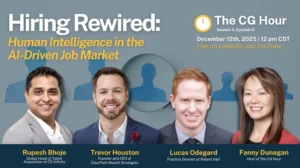Singapore is a Top Index-Ranked Smart City. How are They Collaborating with China to Build Asian Sustainability?
Singapore was the highest index-ranked Smart City in the world in 2021, followed by a tie between Zurich and Oslo, according to Statista. While China did not have any cities listed on the index-ranked list, they are certainly working to build digital and business collaborations with Singapore through their Smart City Initiative, which was launched in 2019.
What are some of the specifics that Singapore and China are working on with this initiative? There are a total of eight agreements and 14 projects between the two. Some of the projects include planning to reduce carbon dioxide emissions and boost how batteries are used for electric vehicles via artificial intelligence.
With varied dynamics between the environments and cultures in Singapore and China, how do their approaches differ when it comes to building Smart Cities? Paul Doherty, CEO of The Digit Group, Inc, provides insight into Smart City marketing and success rates.
Paul’s Thoughts
“So here’s the thing. Singapore and China have done some good work when it comes to these smart city testings and projects, and they’ve been doing this now for about three years. Being a resident and of China and having my core business be registered in Singapore, I have a keen interest in trying to understand what the success rates and what the measures are.
When these announcements are made always keep in mind that Singapore is excellent marketing itself, especially as a smart nation, smart city. We’ve been doing this since 2014 when the Office of Smart Cities was opened up by the Prime Minister. What I find interesting about this particular announcement is there was no mention of the terms test beds or pilots.
These are projects because in the past what happened was when there was a pilot test, let’s say in, the Jerome Lake District, in the western part of Singapore, they would invite the mass media, the CNNs, and the BBCs, and whatnot. They would do a test for a period of time, and then shelve it, for use in future times. The test beds though, are much more significant, right? They’re, the ones that say, all right, we’re gonna put money into this thing.
There’s an IP associated with co-development, right? But then they shift a bit in order to make it work in a place like Shenzhen, which is where this agreement is. Shenzhen is a southern city in China. It’s known as the Silicon Valley of China. It’s where Tencent and Huawei, other large IT-based organizations are.
So it’ll be interesting to see how these 14 different test beds work out both in Singapore and in China, and if they’re actually going to be benchmarking themselves on this, it’s something to take a keen look at and always learn.”








